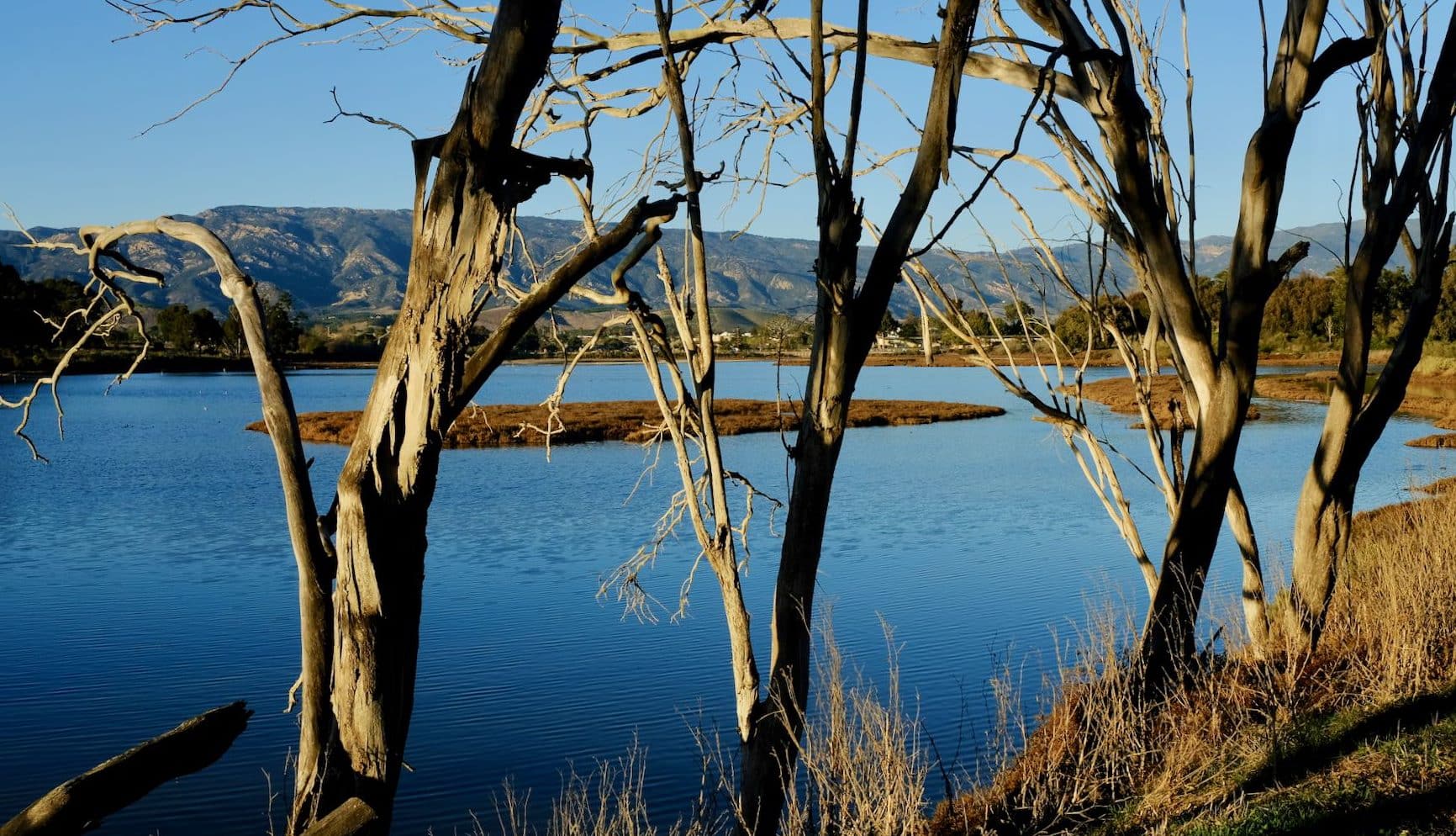Saturday, October 20: North Campus Open Space and the Greater Devereux Slough Ecosystem
Field Trip with Lisa Stratton and Mark Holmgren
Saturday, October 20, 9 a.m. to 1 p.m.
Participation is limited to 25
Advance registration begins September 20 at synature@west.net or 805/ 693-5683
Members $10 / Non-members $25 / Children $5. Payment can be made via check or cash on the day of the field trip or in advance of the trip using a credit card online (once advance registration is completed).
Featured image of Devereux Slough by John Evarts
This trip will explore the Greater Devereux Slough ecosystem, a coastal estuary on the south coast. It has been designated by National Audubon Society as an Important Bird Area, based on its global importance to bird populations. The lower Devereux Slough is part of the Coal Oil Point UC Reserve. The upper Devereux Slough was bulldozed and filled in the 1960s to create a golf course. In 2014, it was purchased by The Trust for Public Land and turned over to UCSB. Last winter, a massive restoration project, the North Campus Open Space Project, began to restore the historical conditions of the upper slough and adjacent mesa. This exciting project continues and is southern California’s largest active restoration effort. We will have the opportunity to tour the restoration and see many of our region’s winter shorebirds and other coastal species as we explore the wetlands, beach strand, dunes, salt marsh, and upper reaches of the diverse habitats surrounding the estuary.
Lisa Stratton has managed UCSB’s restoration projects and open space since 2005. Lisa earned her PhD in 1997 in Botany and Conservation Biology from the University of Hawaii Manoa. She has also worked on Catalina Island, Hawaii, and in East Africa. Lisa is particularly interested in restoration on the urban fringe where it can provide ecosystem services and support wildlife. Working at CCBER, the Cheadle Center for Biodiversity & Ecological Restoration, has enabled her and her team to provide hands-on opportunities for multiple generations of students to appreciate California’s natural heritage.
From 1984 to 2010, Mark served as Curator of the Vertebrate Collections at the Museum of Systematics and Ecology, now the Cheadle Center for Biodiversity and Ecological Restoration. In his retirement, Mark coordinates citizen-assisted natural resource projects to improve information available on animal populations in Santa Barbara County. He oversees the Santa Barbara Breeding Bird Study, a project sponsored by CCBER and accessed at the SB Audubon Society website.
It would also be helpful if they called the restoration project the
North Campus Open Space project...










